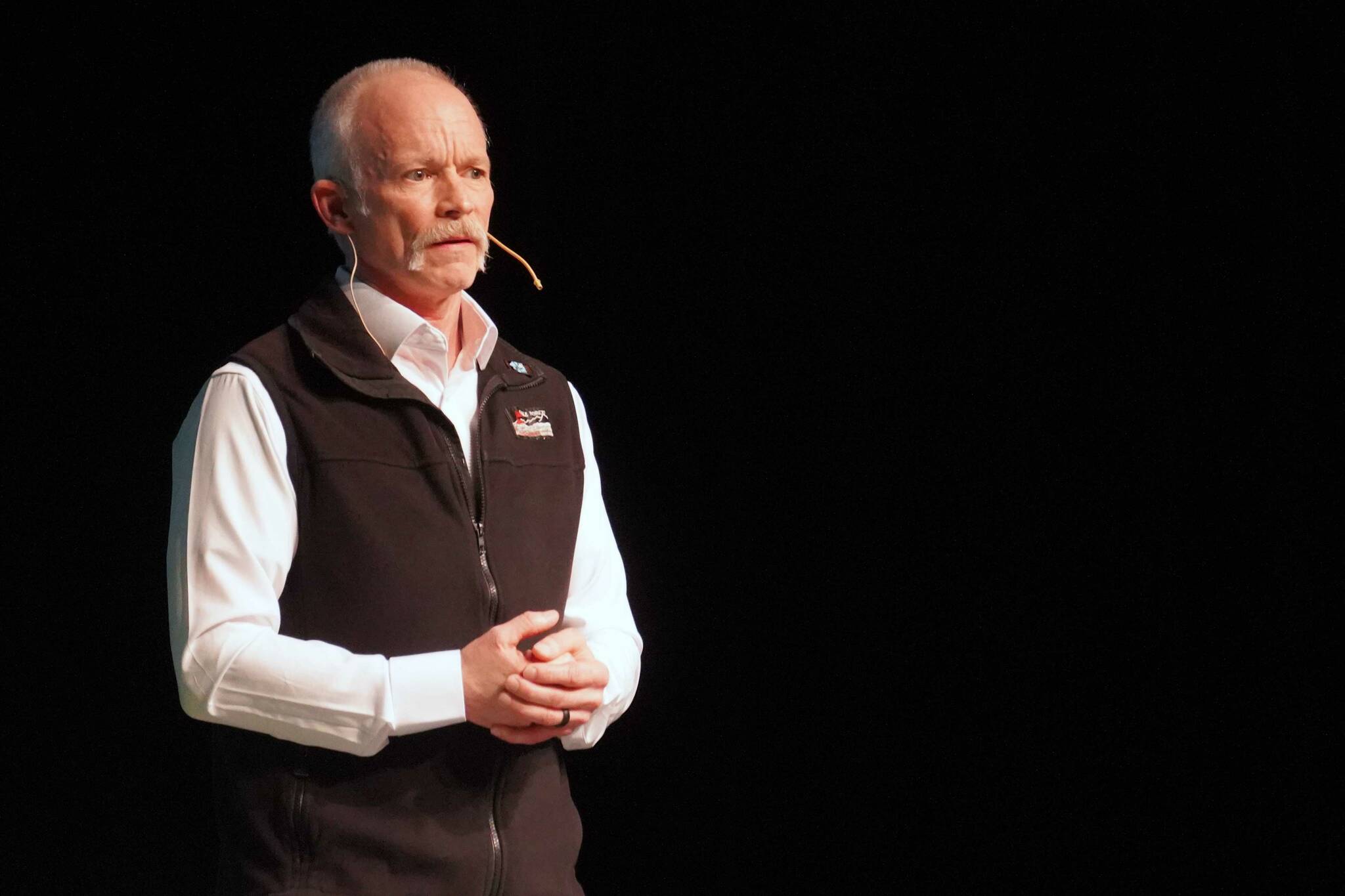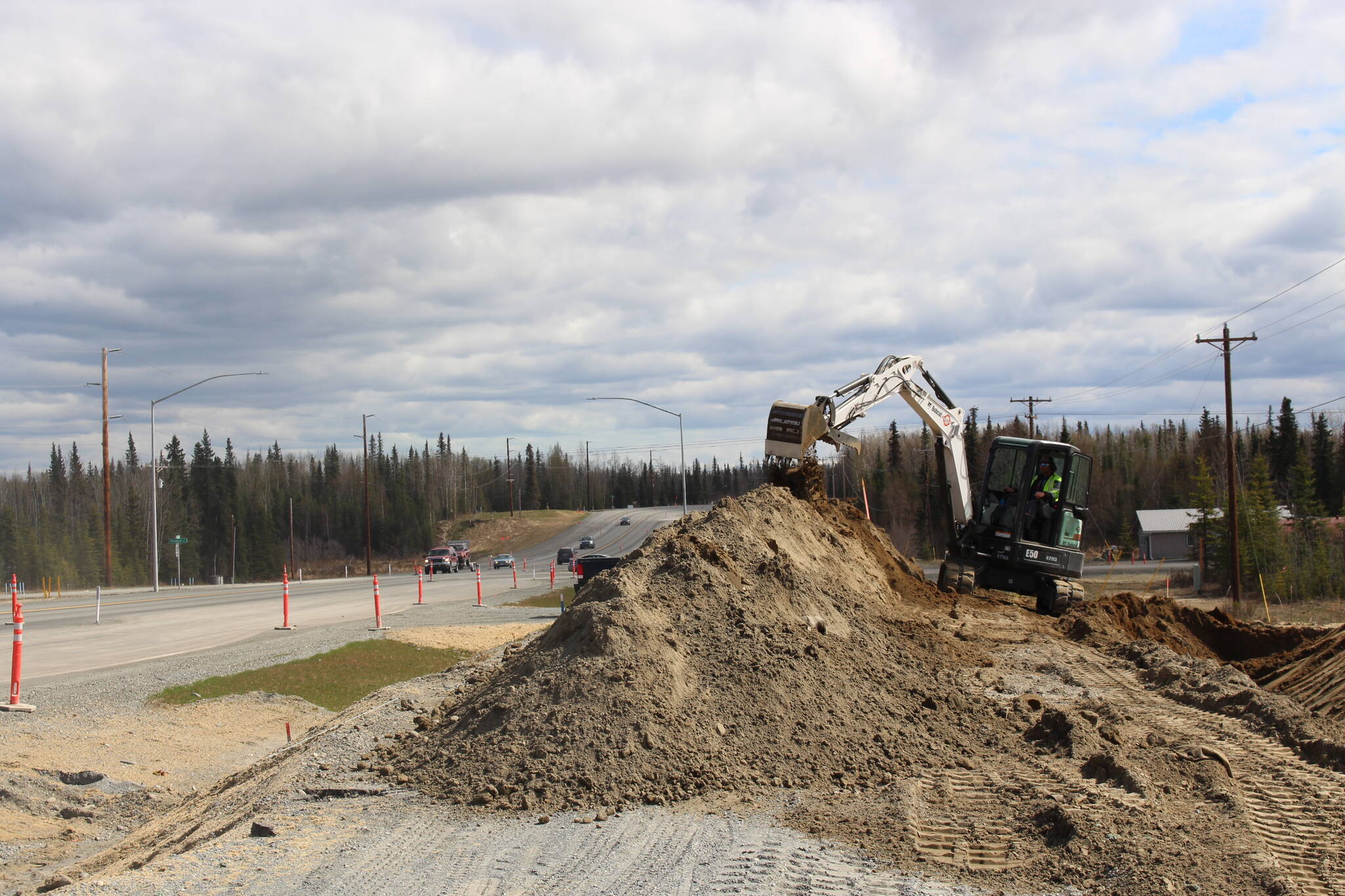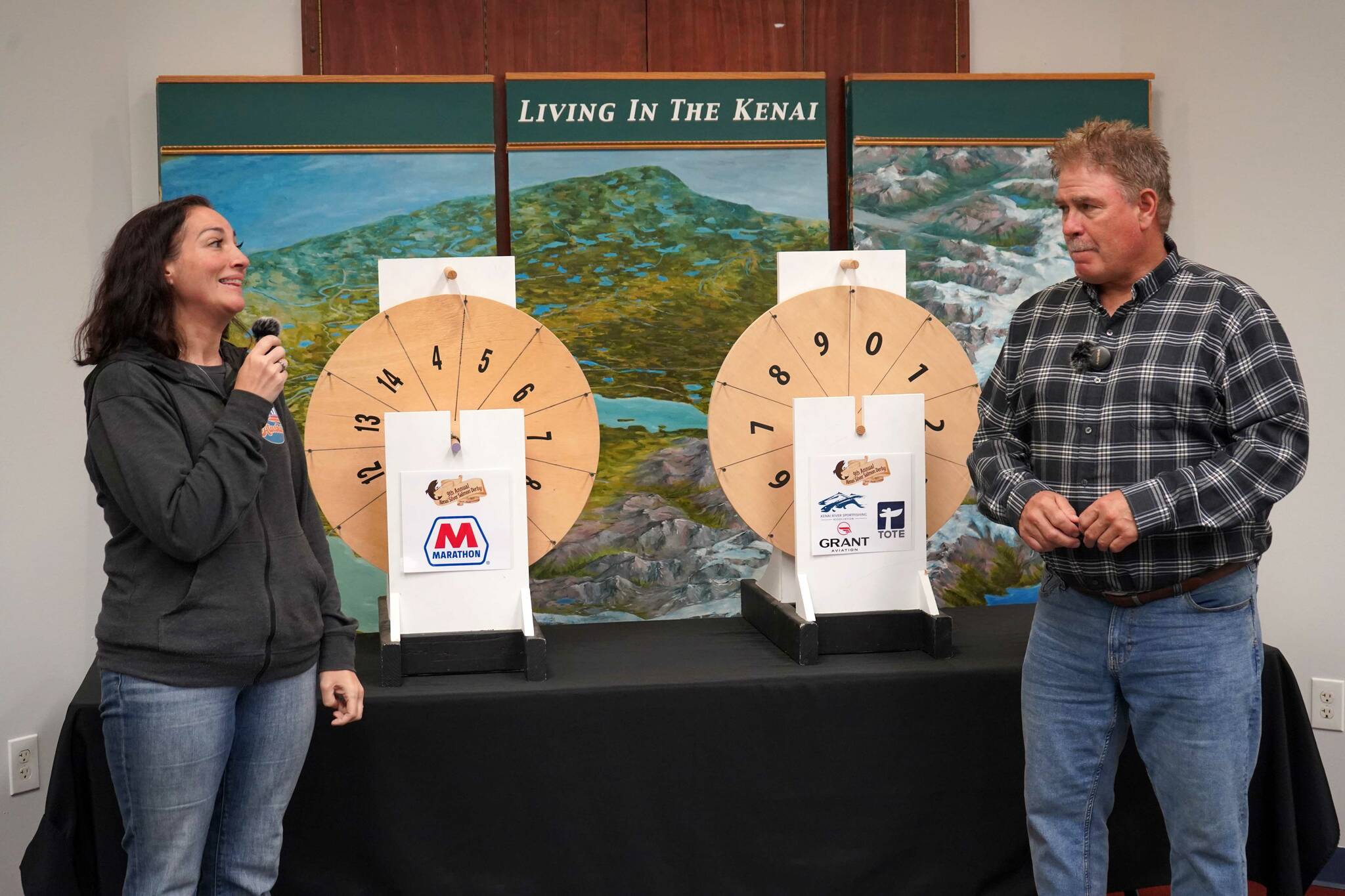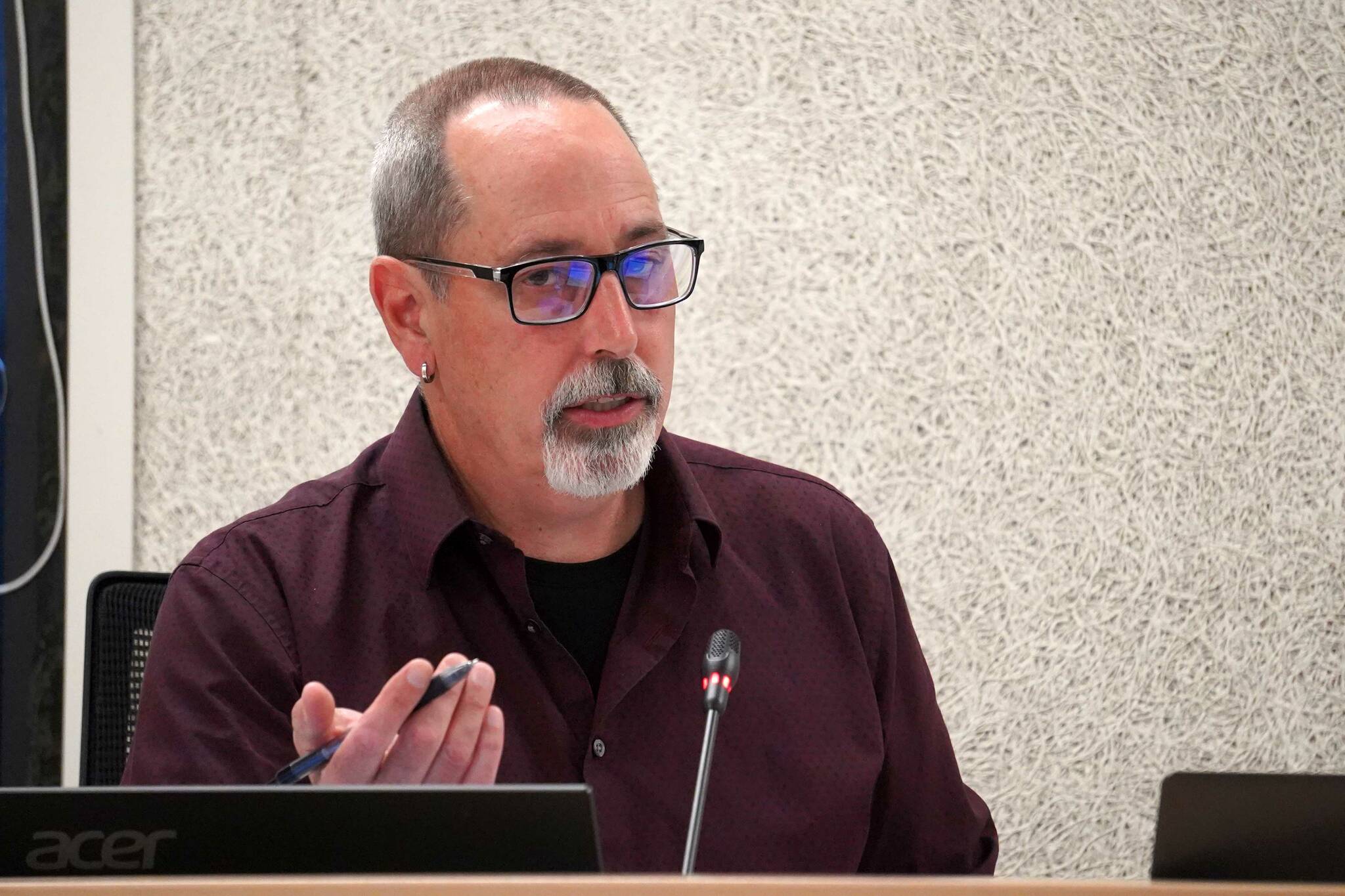The borough’s newly formed Healthcare Task Force attempted to more clearly define its direction Wednesday night to help catch the Kenai Peninsula’s health care system up to the changes already taking hold elsewhere in the country.
The coalition, a combination of policymakers, providers and stakeholders, began meeting in August and plans to release a set of recommendations for policy changes to the Kenai Peninsula Borough Assembly. The Wednesday meeting saw comprehensive presentations by the Central Peninsula Hospital, the South Peninsula Hospital and two community health centers as well as the formation of a subcommittee to focus on provider and practitioner interests.
However, the task force is faced with a massive number of problems to tackle and little definitive direction other than “think outside the box.” Chairman Rick Ross, a former Kenai City Council member, made an open call for suggestions as to direction for the task force at the Wednesday meeting, which was met with a long pause.
The problems the group is tasked with solving are sweeping. The health care delivery system on the peninsula is “broken and fragmented,” according to Rick Davis, CEO of Central Peninsula Hospital and an ex-officio member of the task force. In his presentation, he highlighted the many challenges facing the hospital and other health care organizations: changes in reimbursement, expensive upgrades, challenges in staffing and increased demands on services.
“We give our quarterly report and give some good financials, and I think people have a false impression that things are good,” Davis said. “But we do worry about (changes in health care) and we need to. We’re gong through right now what we discussed in 2010.”
In many ways, Alaska is now bracing itself for the reforms that have swept the Lower 48 for the last few years. While the state has missed some of the experiments that failed in the other states, it is behind on other programs that would improve its ability to adapt to the new models of care and reimbursement under the Patient Protection and Affordable Care Act, Davis said.
Most of the health care organizations on the peninsula still operate on a fee-for-service model, where they are paid for every service they provide regardless of the outcome. The new requirement is that all health care organizations transition to a value-based model, where they are paid based on how well they perform.
This is a better model in the long run but is a challenge in the present, Davis said. CPH is not prepared to begin taking payments based on value yet, but must begin to do so to stay afloat, he said.
Alaska hospitals are expensive compared to the national averages. CPH is affordable by Alaska standards, but some insurers will even send patients to the Lower 48 for medical care because those hospitals are far ahead of Alaska hospitals in terms of affordability, he said.
“We’re extremely far off,” Davis said. “I guess I don’t know, because I’m not the one paying those bills, but you could ask the insurance company and I’d guess they’d say we’re extremely far off. Our costs are higher and we can charge more and get away with it (because) there’s less competition.”
The hospital board also plans to apply to the state to be a designated test model for a new payment system, called a global payment, in which the hospital is reimbursed in a single broad payment for all the Medicaid patients it cares for up front.
Another major challenge and expense is employee recruitment, one that is shared by South Peninsula Hospital in Homer. Derotha Ferraro, director of public relations and marketing for SPH, said the hospital has had to rely on travelers, some of whom come from Anchorage a few times per month.
South Peninsula Hospital has grown significantly, however, expanding its primary care and specialty offerings as a main revenue source. SPH is slightly more sheltered from the changes in the health care reimbursement system because it has a Critical Access Hospital designation — meaning that it is a small hospital with shorter average stays more than 35 miles from any other hospital — and receives additional funding and higher reimbursement rates.
However, that doesn’t mean that it doesn’t face similar challenges, Ferraro said.
“Whether you have five patients or ten patients, you have to pay the same things,” Ferraro said. “Freight costs, salaries, which are very high for Alaska.”
CPH was penalized last year for their readmission rates, which is when a patient is readmitted to the hospital less than 30 days after their discharge. The U.S. Center for Medicare & Medicaid Services began penalizing hospitals for readmissions as a way to improve quality of care, but it costs the hospital thousands of dollars every year, according to Davis.
Critical Access Hospitals like SPH are exempt from the readmissions penalties at present, but it may be coming in the future, said Lori Meyer, SPH’s chief financial officer, at the task force meeting. The goal is to keep patients out of the hospital and catch problems before they become crises.
Thus, there is a higher focus on providing primary care, which is a problem of access. Dr. Katie Sheridan, a task force member and private practitioner in Soldotna, said primary care physicians are struggling to make ends meet as much as hospitals, and some are trying out new models of payment.
A lack of cost transparency for procedures and drugs, communication among physicians and ability to provide preventive care are holding up better health care, she said.
“We need to be good at bread-and-butter medicine,” Sheridan said. “We are not, and that frustrates me to no end.”
Multiple people began discussing the idea of patient-centered medical homes. Patient-centered medical homes are “patient-centric” practices where the patient’s first contact is with their primary care physician and all the services are communicated across the health care system, all circling back to the primary care physician. Sheridan said they have been tried elsewhere in the U.S. with good preliminary results, but are still early to judge if they work or not.
SPH is planning to transition its Homer Medical Center into a patient-centered medical home, Ferraro said. Davis said CPH is in discussion to develop one but has no plans to do so yet.
Currently, about 20 percent of the peninsula’s residents obtain their primary care services in the community health centers in Homer, Seldovia, Soldotna and Seward, according to Monica Adams, CEO of Peninsula Community Health Services.
The CHCs may be a model for other primary care centers to follow because their boards are always at least comprised of 50 percent patients, according to Pat Linton, executive director for the Seward Community Health Center.
Federally Qualified Health Centers are a step ahead in quality as well, because they have to model their billing based on what a patient can pay and must report quality measures to receive funding from the government, Adams said. PCHS is currently the only recognized patient-centered medical home on the peninsula, and Seward Community Health Center has plans to be recognized by 2017, she said. Seldovia’s CHC is close to being recognized as well, she said.
“Community health centers are a solution, but really what they do is primary care,” Adams said. “Primary care is the solution. Costs are lower, it’s prevention-based.”
Sheridan said this is an opportunity for the borough to look at all the factors of community health and improve population health on the peninsula. Other communities in the U.S. are improving health on a community level, and the peninsula could be another place that helps to improve community health as an example in healthcare reform, she said.
“(Primary care transformation) is going to happen,” Sheridan said. “We could be part of shaping that locally. But maybe we want to be bigger than that.”
Reach Elizabeth Earl at elizabeth.earl@peninsulaclarion.com.









